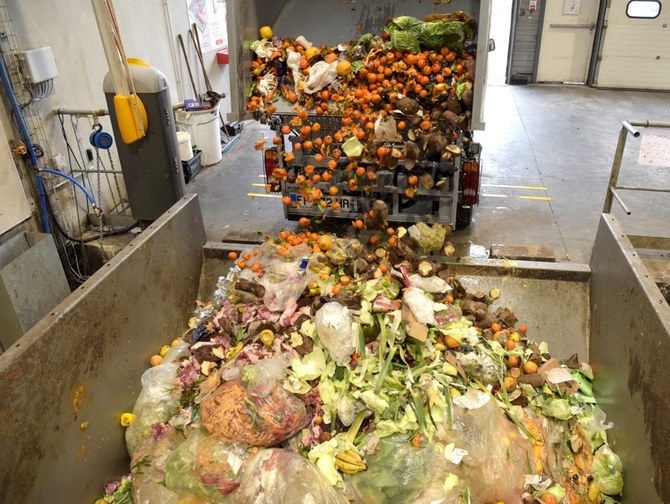Ehtesham Shahid
Callous human behavior would be the foremost explanation for food waste, if there was one. Only humans can waste food in the name of affluence, culture and aesthetics. Considering that about a third of the food produced for human consumption in terms of weight and a quarter in terms of calories is being wasted globally, the fact-finding must dig deeper, especially into its socioeconomic causes.
One estimate suggests that up to 40 percent of food is lost between harvest and consumer. The percentage is even higher in the Middle East and North Africa, despite its primarily arid lands and growing population, which depends heavily on an estimated $33 billion in food imports annually. The region’s approximate 44 percent food loss and waste happen mainly at the household level.
Many urban residents often need to be made aware of the rigors of food production as otherwise they are relatively insensitive. Making matters worse, the modern-day, hyper-aware consumer overindulges in and gets confused by the “best before,” “use by” and “sell by” labels on products, causing food’s premature disposal. Health and safety regulations also mean unsold food is discarded instead of being donated due to potential liability concerns. The market factor kicks in when wasting food becomes cheaper than storing, transporting or repurposing it.
According to sustainability consultancy Thriving Solutions, the MENA region’s average per capita food loss and waste is 210 kg annually. It is not just about the proportion of edible food not consumed but also the waste of resources in production and distribution, contributing to negative externalities. Logistical factors such as transportation and storage, the demand-supply cycle and price fluctuations are also at play.
Typically, food exits the supply chain for numerous reasons, primarily due to its quality, appearance, value, surplus and preference. While food loss happens during harvest, slaughter and in retail outlets, food waste can be primarily attributed to consumption points. That is where human behavior comes into the picture — at dining establishments and within households.
As part of the International Food Waste and Loss Protocol, adopted 10 years ago, several world bodies, including the UN’s Food and Agriculture Organization and Environment Program, offered guidance and requirements for quantifying food waste. The protocol encourages businesses and governments to take more targeted and effective measures to reduce food loss and waste. However, as is mostly the case, the execution remains variable and the results are less impactful than desired.
The FAO calls a country “food secure” when all its people have “physical, social and economic access” to “sufficient, safe and nutritious food” in line with their dietary needs and food preferences. That makes food waste a global problem affecting the three pillars of sustainable development — environmental, economic and social. However, awareness is the key, as the message of food waste’s implications needs to be amplified to alter human attitudes toward the issue.
Social behavior lies at the core of this challenge, as numerous studies have identified consumers as significant contributors to food waste. It is also critical to understand that precious resources such as water, energy and labor get wasted when food is discarded. Studies have examined factors affecting food choices, social influence on food waste and food-buying practices. Some key recommendations include provisions for more community-driven food redistribution and food bank initiatives.
Understanding our food habits’ cultural affiliations is also critical. For instance, if we emphasize the principles of gratitude, frugality and charity across faiths, we should, by definition, also encourage more sustainable consumption. It is also time to overcome standard practices such as preparing more food than necessary for feasts or celebrations, leading to leftovers that may not be consumed.
In most cultures worldwide, hospitality is paramount and serving abundant food, especially during celebrations, is a mark of generosity. It is time to alter that perception. Some people frown upon consuming leftovers and see it as a sign of poverty, leading to unnecessary waste. High disposable income levels can also lead to a culture of excess and wastefulness, especially in food consumption.
We cannot afford to waste while ensuring global food security because it contributes to greenhouse gas emissions. The good news is that governments in the region are beginning to tie the food loss and waste challenge with climate action. It is also part of the Nationally Determined Contribution submissions made by 16 Arab League countries. However, each region has its own set of challenges.
Income levels correlate negatively with food loss, as high income indicates countries’ ability to invest in equipment to reduce food losses. On the other hand, the socioeconomic factors of low-income countries — their education systems, people’s access to electricity and their lack of political stability — might correlate with losses.
The factors behind food waste are evolving with time. Empirical evidence can help authorities devise the best intervention strategy and prioritize accordingly. They can promote direct farmer-consumer links to reduce intermediaries and shorten the supply chain to minimize waste. However, that is just one side of the story. As is the case with climate change, where warnings do not drastically alter our behavior, we need to invoke social responsibility when it comes to food waste.







